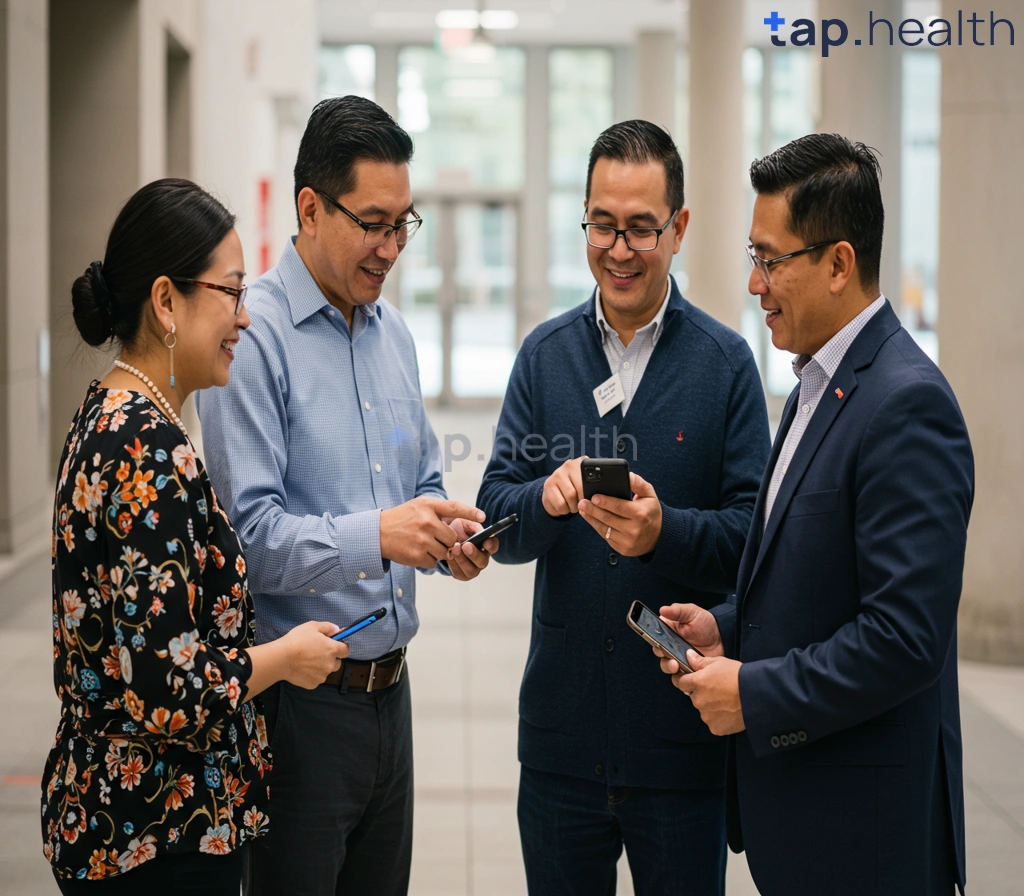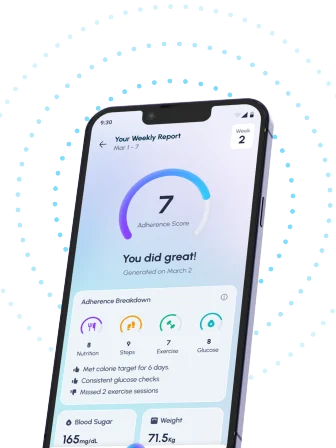Table of Contents
- Diabetes in Minnesota’s American Indian Community: A Comprehensive Guide
- Overcoming Diabetes Challenges: Success Stories from Minnesota’s American Indian Population
- Traditional Healing & Modern Medicine: Diabetes Management in Minnesota’s Indigenous Communities
- Improving Diabetes Outcomes: A Look at Health Initiatives for Minnesota’s American Indian Tribes
- What are the Unique Diabetes Challenges Faced by Minnesota’s American Indian Communities?
- Frequently Asked Questions
- References
Diabetes affects many communities, and within Minnesota’s American Indian population, the challenges are particularly significant. This blog series, Overcoming Diabetes Challenges: A Minnesota American Indian Community’s Journey to Health, will share inspiring stories of resilience, innovative solutions, and the cultural factors influencing this complex health issue. We’ll explore the unique hurdles faced by this community and highlight the powerful strategies they’re using to improve their well-being. Get ready to learn about effective community-based initiatives and the vital role of cultural understanding in diabetes management.
Diabetes in Minnesota’s American Indian Community: A Comprehensive Guide
Understanding the Challenge
Diabetes disproportionately affects Minnesota’s American Indian communities, mirroring a global trend. While the provided data on Tamil Nadu, India, showing a 16% prevalence of diabetes in the adult population highlights the significant burden of this disease in certain regions, the challenges faced by Minnesota’s Indigenous population are unique and require tailored solutions. This guide will explore these challenges and offer pathways towards improved health outcomes.
Addressing the Root Causes
Several factors contribute to the high prevalence of diabetes within Minnesota’s American Indian communities. These include limited access to healthcare, socio-economic disparities, and traditional dietary shifts. Addressing these complex issues requires a multi-pronged approach, involving community engagement, culturally sensitive education, and increased access to resources. Promoting healthy lifestyles through traditional practices and modern interventions is key. The challenges faced are often compounded as individuals age, as highlighted in our article on Managing Diabetes as You Age: Challenges and Solutions.
Empowering the Community
Effective diabetes management requires community-led initiatives focused on education, prevention, and support. This includes culturally appropriate diabetes education programs, accessible healthcare services, and robust support networks. By empowering individuals and fostering a sense of collective responsibility, we can make significant progress in combatting this health crisis. Building upon existing community strengths and respecting traditional knowledge systems is crucial for long-term success. Maintaining a healthy lifestyle is crucial, even when traveling. For tips on managing your diabetes while traveling, see our guide on Traveling with Diabetes: Essential Tips for a Safe & Healthy Journey.
Taking Action
Individuals in the Minnesota American Indian community can take proactive steps toward preventing or managing diabetes through lifestyle changes, regular health check-ups, and active participation in community health initiatives. For further information on diabetes prevention and management resources tailored to the needs of Minnesota’s American Indian communities, contact your local healthcare provider or community health center. The journey to improved health is a collective one, demanding collaboration, empathy, and sustainable solutions.
Overcoming Diabetes Challenges: Success Stories from Minnesota’s American Indian Population
Diabetes disproportionately affects American Indian communities, mirroring global trends. The projected increase in diabetes cases globally, from 77 million in 2019 to over 134 million by 2045, as highlighted in a recent study (see this research), underscores the urgency of addressing this health crisis. This is especially true in regions like India and other tropical countries where similar challenges exist.
Community-Based Initiatives
Minnesota’s American Indian communities are actively combating diabetes through innovative programs. These initiatives often focus on culturally relevant approaches to education, preventative care, and support systems. Success stories showcase the power of community-led solutions and their impact on improving health outcomes. Traditional foods and lifestyle modifications, tailored to cultural practices, are key components of many successful programs. For more effective management strategies, see our guide on 10 Proven Tips for Effective Diabetes Management.
Empowering Individuals
These programs emphasize individual empowerment through education and access to resources. By providing individuals with the knowledge and tools to manage their diabetes, these initiatives promote self-sufficiency and improved long-term health. Increased access to healthcare, combined with culturally sensitive education, is crucial to improving the well-being of this population. Strengthening your immune system is also vital; learn more in our article on Boosting Immunity While Managing Diabetes.
A Call to Action
The fight against diabetes requires a global effort. In India and other tropical countries, similar community-based strategies, focusing on prevention and accessible healthcare, can make a significant difference. Let’s learn from the successes of Minnesota’s American Indian communities and adapt those solutions to our own regional contexts to empower individuals and improve overall health outcomes in our communities.
Traditional Healing & Modern Medicine: Diabetes Management in Minnesota’s Indigenous Communities
Diabetes significantly impacts Minnesota’s American Indian communities. The statistics are stark: a substantial portion of those affected fall within the 20-64 age range (61% globally), a critical demographic for community vitality and economic productivity. Successfully managing this chronic illness requires a nuanced approach that integrates traditional healing practices with modern medical interventions.
Bridging Traditions and Technology
Many Indigenous communities in Minnesota possess a rich history of herbal remedies and holistic wellness practices passed down through generations. These traditional methods, often focusing on preventative care and balanced lifestyles, can complement modern diabetes management strategies. For example, incorporating traditional foods and mindful eating practices, alongside prescribed medications and regular check-ups, may offer a more holistic approach to maintaining blood sugar levels and overall wellbeing. For more information on adapting traditional cuisines to better manage blood sugar, see our blog on Adapting Traditional Cuisines for Better Blood Sugar Control.
Community-Based Solutions
Effective diabetes management requires a strong community focus. Support groups, culturally sensitive educational programs, and access to culturally appropriate healthcare are crucial in empowering individuals and families to proactively manage the disease. Collaboration between healthcare providers, community leaders, and traditional healers is vital in creating sustainable and effective programs. This integrated approach ensures that individuals receive the support and resources they need to navigate the challenges of living with diabetes. A personalized approach is also key; learn more in our blog, Personalized Diabetes Control: Your Key to Better Health.
A Call to Action
Across Indian and tropical countries, fostering similar collaborations between traditional healers and modern healthcare systems could significantly improve diabetes management within Indigenous communities. Sharing knowledge, resources, and best practices across regions can help create more effective, culturally-sensitive programs, leading to better outcomes for affected populations and strengthening community resilience.
Improving Diabetes Outcomes: A Look at Health Initiatives for Minnesota’s American Indian Tribes
Diabetes disproportionately affects Minnesota’s American Indian communities, mirroring a global health crisis impacting many Indian and tropical countries. The staggering cost of diabetes in the U.S. – an estimated $327 billion annually in direct medical costs and lost productivity – underscores the urgent need for effective interventions. This financial burden highlights the societal impact, particularly within vulnerable populations.
Community-Based Solutions
Successful strategies often involve culturally relevant programs tailored to the specific needs and traditions of each tribe. These initiatives might include increased access to healthy, traditional foods, promoting physical activity through culturally appropriate means, and strengthening community support systems. Empowering community members as health advocates and educators is crucial for long-term success. The focus isn’t just on managing the disease but on preventing it through education and lifestyle changes. For more on the impact of education, see our article on How Diabetes Education Enhances Health Outcomes – Tap Health.
Addressing Health Disparities
Many factors contribute to the higher rates of diabetes within these communities. These include limited access to healthcare, socioeconomic challenges, and historical trauma. Addressing these underlying issues is essential for achieving sustainable improvements in diabetes outcomes. Investing in culturally sensitive healthcare infrastructure and creating partnerships with tribal leaders are key components of any effective strategy. Furthermore, advancements in technology are playing an increasingly important role. To learn more, read our piece on How Can New Technological Advances Improve Diabetes Lifestyle?.
A Call to Action
For Indian and tropical countries facing similar challenges, learning from Minnesota’s American Indian communities offers valuable insights. Sharing best practices and collaborating on research initiatives can lead to significant progress in overcoming diabetes and improving overall health outcomes. Prioritizing culturally appropriate diabetes prevention and management programs is essential for creating lasting positive change across regions.
What are the Unique Diabetes Challenges Faced by Minnesota’s American Indian Communities?
Minnesota’s American Indian communities face disproportionately high rates of diabetes, a stark reality reflecting broader global trends. Over 75% of people with diabetes live in low- and middle-income countries, according to the International Diabetes Federation, highlighting the pervasive nature of this disease. However, the challenges within Minnesota’s Indigenous populations extend beyond simple prevalence statistics. These communities grapple with unique obstacles intricately woven into socioeconomic factors, historical trauma, and limited access to healthcare.
Socioeconomic Barriers and Healthcare Access
Poverty, food insecurity, and lack of access to quality healthcare are significant barriers. Many tribal communities lack sufficient grocery stores offering fresh produce, leading to diets high in processed foods and contributing to weight gain, a major diabetes risk factor. Furthermore, the geographical isolation of some reservations limits access to specialized diabetes care, including regular check-ups and necessary medications. This results in delayed diagnosis and poorer management of the disease. The impact of these challenges can extend beyond the physical, significantly affecting mental wellbeing, as explored in The Impact of Diabetes on Mental Health.
Cultural Factors and Traditional Practices
While traditional practices and knowledge offer potential benefits, integrating them with modern diabetes management can present challenges. Cultural beliefs and social networks often influence health behaviors, sometimes posing obstacles to adopting necessary lifestyle changes. Finding culturally sensitive healthcare providers and diabetes education programs is crucial for achieving optimal health outcomes. It’s also important to understand how diabetes can affect other bodily systems, such as the respiratory system, as detailed in How Does Diabetes Affect the Respiratory System?.
Addressing the Complexities
Successfully addressing the diabetes crisis among Minnesota’s American Indian communities demands a multi-pronged approach. It requires tackling socioeconomic disparities, improving healthcare access, and incorporating culturally appropriate interventions. This includes empowering communities through education, promoting access to healthy food options, and supporting the integration of traditional knowledge with evidence-based diabetes management strategies. Only through such holistic strategies can we effectively combat this critical public health concern.
Frequently Asked Questions on Overcoming Diabetes Challenges
Q1. What is the main health concern addressed in the blog?
The blog focuses on the disproportionately high rate of diabetes within Minnesota’s American Indian communities and the need for effective solutions.
Q2. What are the key factors contributing to the high rates of diabetes in this population?
Several factors contribute, including limited access to healthcare, socioeconomic disparities, and changes in traditional diets.
Q3. What kind of approach is most effective in managing diabetes within these communities?
A multi-pronged approach is most effective. This includes community engagement, culturally sensitive education, and improved access to resources. Successful programs often integrate traditional practices with modern interventions.
Q4. What role do community-led programs play in addressing this issue?
Community-led programs are crucial. They focus on culturally relevant education, preventative care, and support systems, empowering individuals through knowledge and resource access.
Q5. What are the broader societal factors that need to be addressed to improve the situation?
Tackling socioeconomic inequalities and improving healthcare access are critical for long-term success. Incorporating culturally appropriate strategies fosters community resilience and better health outcomes.
References
- A Practical Guide to Integrated Type 2 Diabetes Care: https://www.hse.ie/eng/services/list/2/primarycare/east-coast-diabetes-service/management-of-type-2-diabetes/diabetes-and-pregnancy/icgp-guide-to-integrated-type-2.pdf
- Children with Diabetes : A resourse guide for families and school. : https://www.health.ny.gov/publications/0944.pdf




